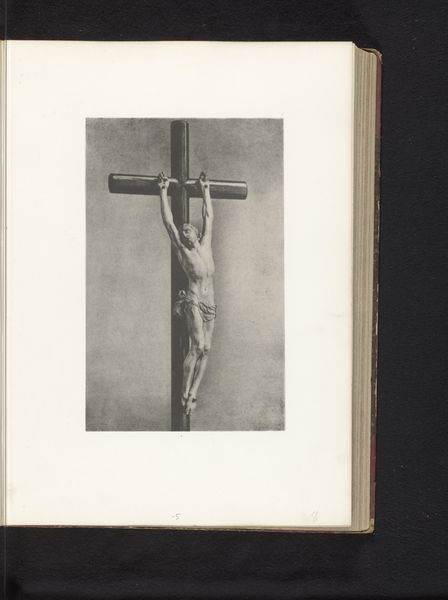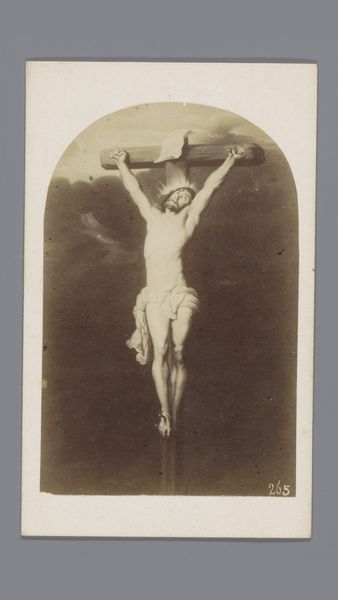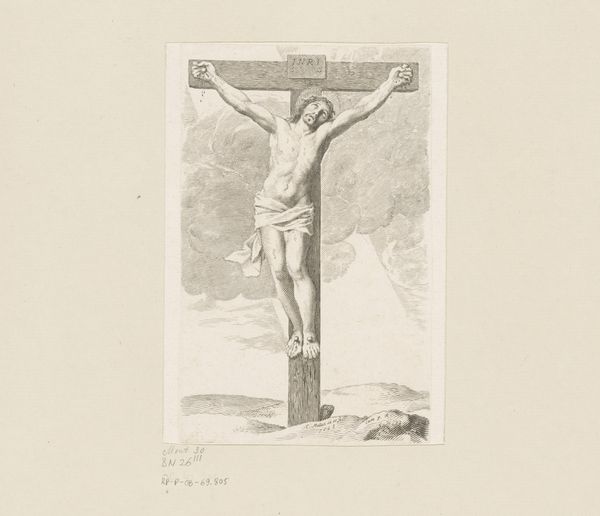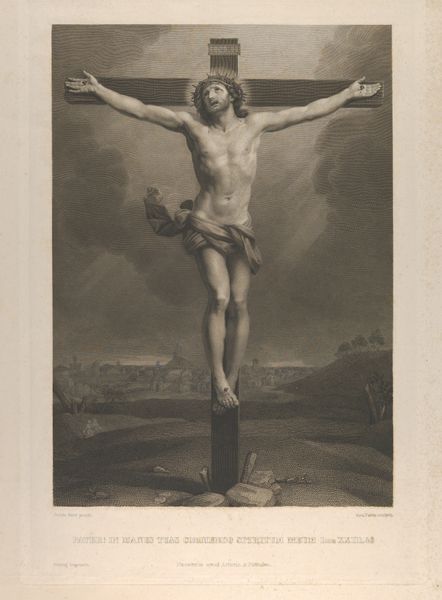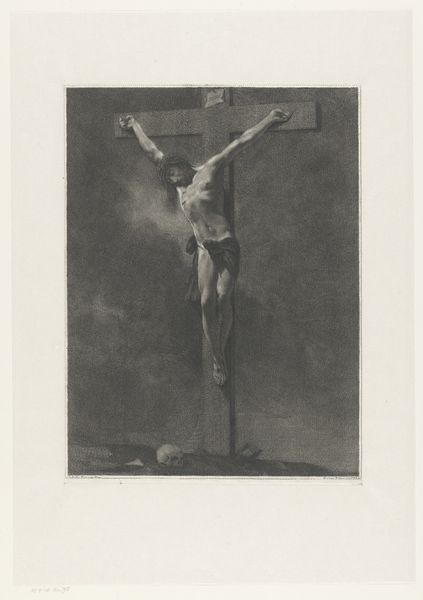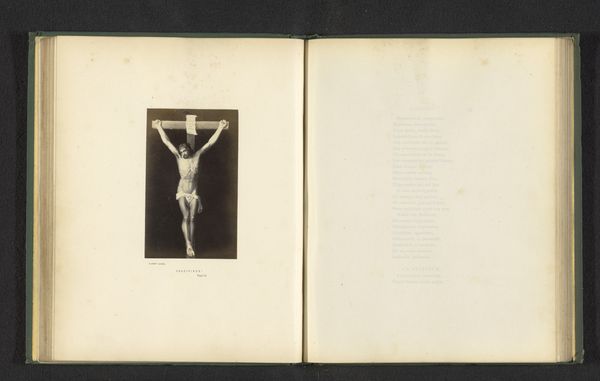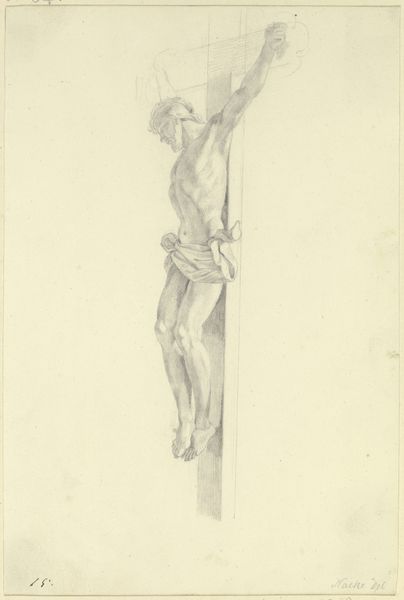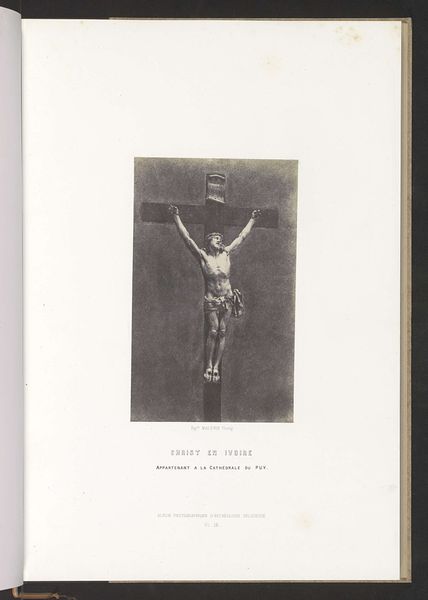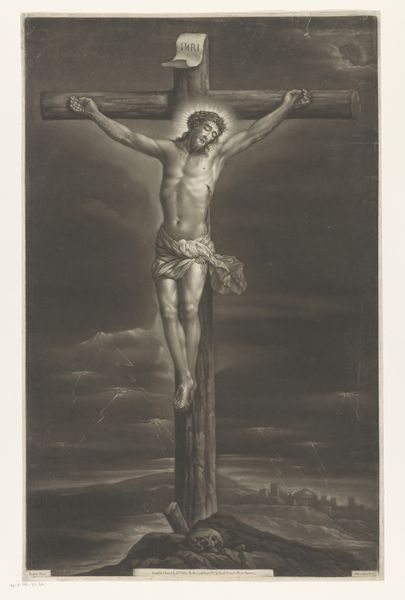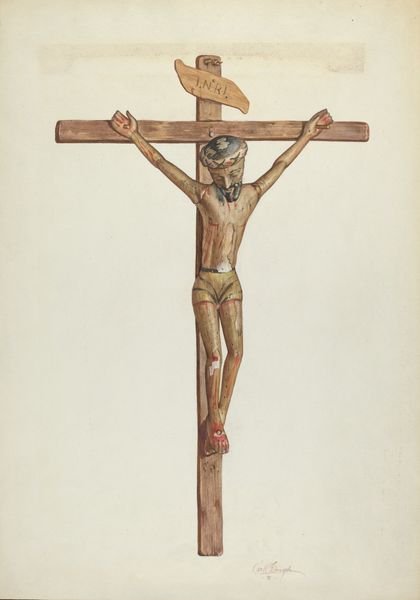
Crucifix van ivoor uit de bisschoppelijke kapel in Gent, opgesteld op een tentoonstelling over religieuze objecten uit de middeleeuwen en renaissance in 1864 in Mechelen 1864
0:00
0:00
photography, sculpture, wood, ivory
#
portrait
#
medieval
#
figuration
#
photography
#
sculpture
#
wood
#
ivory
#
realism
#
statue
Dimensions: height 277 mm, width 197 mm
Copyright: Rijks Museum: Open Domain
This photograph by Joseph Maes captures an ivory crucifix, which was displayed at an exhibition of religious objects in Mechelen in 1864. Ivory, derived from elephant tusks, was a prized material for carving delicate religious figures like this one. Working with ivory required immense skill. The carver would have meticulously shaped the material using specialized tools, gradually revealing the form of Christ. The smooth, polished surface of the ivory gives the figure a lifelike quality, emphasizing the humanity of Christ. The choice of ivory is significant; it's a luxury material, reflecting the wealth and power of the Church. Yet, it also speaks to the human cost of acquiring such materials through labor and trade. Considering the work through its materiality allows us to appreciate the artistic mastery involved and understand its cultural and historical significance. It also challenges us to consider the broader ethical implications tied to the material's extraction and use.
Comments
No comments
Be the first to comment and join the conversation on the ultimate creative platform.
